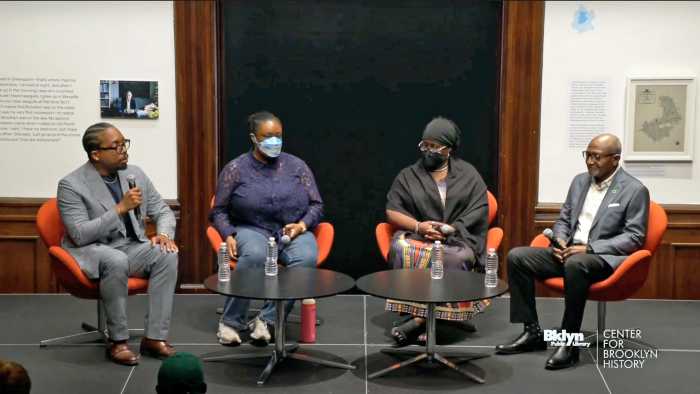CDC researcher debunks statistical basis of reporting on black bisexual men spreading HIV
A federal government researcher whose study on young gay and bisexual men has been cited in the mainstream press as evidence of the health threat posed by men on the down low said her work was not focused on those men and there is little evidence to support the view that these men threaten the health of others.
In 2003, the New York Times Magazine, the Washington Post and the Chicago Sun-Times published stories saying that men on the down low—or African American men who have sex with both men and women, but do not identify as gay or bisexual—are making a significant contribution to the spread of HIV among African-Americans.
Each story cited data from the Young Men’s Survey (YMS), a multi-year study by Dr. Linda A. Valleroy, that investigated the sexual behavior of 3,492 15- 22-year-olds in seven U.S, cities between 1994 and 1998 and 2,949 23- to 29-year-olds in six U.S. cities between 1998 and 2000. Her study was not an investigation of men on the down low.
“We sampled young men who had sex with men who went to places where young men who have sex with men went,” said Valleroy, an epidemiologist and deputy associate director for science at the Centers for Disease Control and Prevention (CDC). “The African Americans that we sampled, they were labeling themselves as homosexual or bisexual.”
Valleroy released the final results of the study at 15th International AIDS Conference in held in Thailand in July. Parts of the study were released previously as they were completed and that earlier data has appeared in stories on down low men. Those stories consistently asserted that down low men represent a bridge for HIV between gay men and African American women. The stories all cited YMS data.
Writing in The Times, reporter Benoit Denizet-Lewis reported, “According to the Centers for Disease Control, one-third of young urban black men who have sex with men in this country are H.I.V.-positive, and 90 percent of those are unaware of their infection.”
In the Washington Post, Jose Antonio Vargas also cited the study and wrote, “These men were identified as a major bridge for transmitting HIV to heterosexual women.”
In the Chicago Sun Times, reporter Cheryl Jackson wrote, “The Centers for Disease Control and Prevention connected black men on the down low with the rise of HIV infection rates among black women.”
In its July press release on the study, the CDC pointedly noted that the study was not about down low or bisexual men. Valleroy reiterated that in an e-mail to Gay City News.
“YMS was not a ‘down low sample of young men,’ YMS was not a ‘bisexual sample of young men,’“ she wrote. “YMS was a sample of young men who had ever had sex with men who went to venues where young men who had sex with men were likely to go. The reason that ‘down low’ appears in the press release from CDC is that CDC was afraid that the press would get the wrong idea: the wrong idea being that YMS studied down low or bisexual guys, solely or particularly.”
The number of men who identified themselves as living on the down low in the Valleroy study was tiny because the participants were recruited at gay bars, bathhouses and similar venues.
“There were very few down low guys in this sample because down low guys don’t tend to appear at the more obvious type places [where men who have sex with men go],” Valleroy wrote.
Men on the down low do not visit such places because they do not identify as gay or bisexual.
The number of men in the study who had sex with both men and women was also small. Among the 15- to 22-year-olds, just under four percent of the men had unprotected sex with both men and women in the six months prior to the study. That was true of just over two percent of the 23- to 29-year-olds studied.
“In presenting all the data, what I say now is there is a bridge—it’s not an extremely large bridge,” Valleroy said in an interview. “It’s not the Golden Gate Bridge.”
Valleroy did not dispute that the down low phenomenon is real, but said its role, if any, in the spread of HIV is unknown, as is the number of men living on the down low.
“I think that there is something out there—how prevalent it is I don’t know,” she said. “No study has ever been done to see how prevalent it is… Nobody knows how prevalent it is, but it’s in novels and it’s in rap music and it’s on ‘Oprah.’”

































